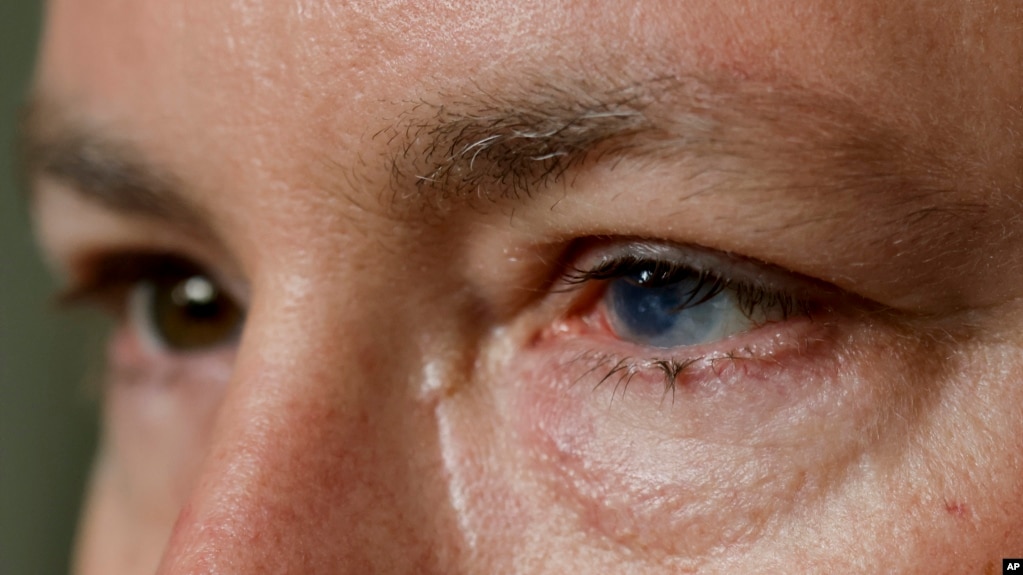Experimental Treatment Promises to Heal Some Eye Injuries

In 2017, a workplace accident resulted in Phil Durst losing sight in his left eye.
He experienced severe pain from the incident which left him unable to tolerate light. He also experienced severe headaches four or five times a day.
Then he underwent an experimental operation that aims to treat severe injuries in one eye with stem cells from the other eye.
Durst said he went from being completely blind to seeing well enough to drive. Regaining his sight was an emotional experience for the 51-year-old from Homewood, Alabama.
Durst was one of four patients to get stem cell transplants as part of the first study to test the method in the United States. Although additional treatment is needed, experts say the stem cell transplant offers hope to people who are not getting results from other methods.
The experimental research results were published recently in Science Advances. A larger study is underway.

This photo provided by Mass Eye and Ear Phil Durst sits with the surgical team after the first transplant procedure in Boston in April 2018. (Mass Eye and Ear via AP)
The operation is designed to treat “limbal stem cell deficiency.” It is a disorder of part of the eye called the cornea. The problem happens after chemical burns and other injuries. Limbal cells are needed to keep the outer surface of the cornea healthy. Patients without limbal cells cannot have corneal transplants that are commonly used to improve sight.
Dr. Ula Jurkunas is an ophthalmologist at the treatment center Mass Eye and Ear in Boston, Massachusetts. She was the main researcher for the study. She said the experimental method involves taking a few stem cells from the healthy eye, then expanding them and growing them on a graft. The research took place at a laboratory at Dana-Farber Cancer Institute in Boston.
A few weeks later, the grafts are transplanted into the injured eye. Durst was the first patient to undergo the operation.
“The great part of it is that we’re using a patient’s own tissue,” not donor tissue the body might reject, Jurkunas said.
She said this method is better than a different operation that takes a very large piece of stem cells from a healthy eye for use on an injured eye – but risks damaging the good eye.
Both of Durst’s eyes were hurt in the accident. For six to eight months, his sight was so bad that his wife or son had to lead him around. But his right eye was less injured than his left one and could provide stem cells for the transplant.
Jurkunas also works with Harvard Medical School. She said Durst’s 2018 operation was the product of almost 20 years of research. She said the researchers were happy to finally do the operation.
All patients in the study reported that their cornea surfaces improved to normal. Durst and another patient were then able to get transplants of man-made corneas. Two others reported improved sight with the stem cell transplant alone. A fifth patient did not receive the operation because the stem cells were not able to expand enough.
Durst said the vision in his right eye is nearly normal but the vision in his left could improve. He will have another operation in September to correct it.
Researchers are finishing the next step of the clinical trial, which includes 15 patients.
Jurkunas estimates that 1,000 people in the U.S. could be helped every year by this sort of stem cell transplant. The treatment has also been studied in Japan.
Words in This Story
tolerate –v. to permit something to happen; to be able to bear the results of something
headache –n. pain in the head from a number of causes
stem cells – n. a simple cell in the body that is able to develop into any one of various kinds of cells (such as blood cells or skin cells)
blind –adj. being unable to see at all
transplant – n. a medical operation in which an organ or other part is removed from the body of one person and put into the body of another person
deficiency – n. a lack of something that is needed
ophthalmologist – n. a doctor who studies and treats problems and diseases of the eye
graft – n. a piece of skin, muscle, or bone that is attached to a part of the body to repair a damaged area
vision –n. the ability to see
clinical trial – n. a research study that tests how well new medical methods work in people
Experimental Treatment Promises to Heal Some Eye Injuries (voanews.com)